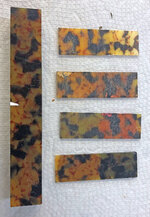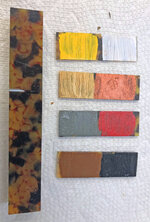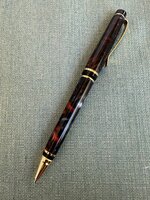RunnerVince
Member
I've been doing a lot of acrylics lately and have gotten some great advice from everyone here on my own process. Now that I've gotten the "me" problems under control, I'm starting to look a lot more critically at the blanks themselves.
I know a translucent blank is always going to look different when turned to size for a pen, but a lot of the blanks I've done have changed drastically. One was a deep blue, and went almost aqua once it was down to size for a Pluma kit. Another was a yellow that went basically clear. Still others look opaque as a blank but then go way into translucent or transparent territory once turned. I assume all of this has to do with the type and amount of dye/pigment put into the blank, but since I don't make my own blanks, the only control I have is to purchase quality blanks.
I'm looking for suggestions on quality "acrylic" blanks, where the color stays in the same ballpark once the blank is turned to size. Who makes them, and where do you buy them from? Are there any you avoid?
My last large batch of acrylics came from PSI, and the quality was all over the place, though I wasn't really paying attention to the specific brands I was buying at the time. I'd love everyone's help in knowing what to look for next time I buy.
I know a translucent blank is always going to look different when turned to size for a pen, but a lot of the blanks I've done have changed drastically. One was a deep blue, and went almost aqua once it was down to size for a Pluma kit. Another was a yellow that went basically clear. Still others look opaque as a blank but then go way into translucent or transparent territory once turned. I assume all of this has to do with the type and amount of dye/pigment put into the blank, but since I don't make my own blanks, the only control I have is to purchase quality blanks.
I'm looking for suggestions on quality "acrylic" blanks, where the color stays in the same ballpark once the blank is turned to size. Who makes them, and where do you buy them from? Are there any you avoid?
My last large batch of acrylics came from PSI, and the quality was all over the place, though I wasn't really paying attention to the specific brands I was buying at the time. I'd love everyone's help in knowing what to look for next time I buy.




